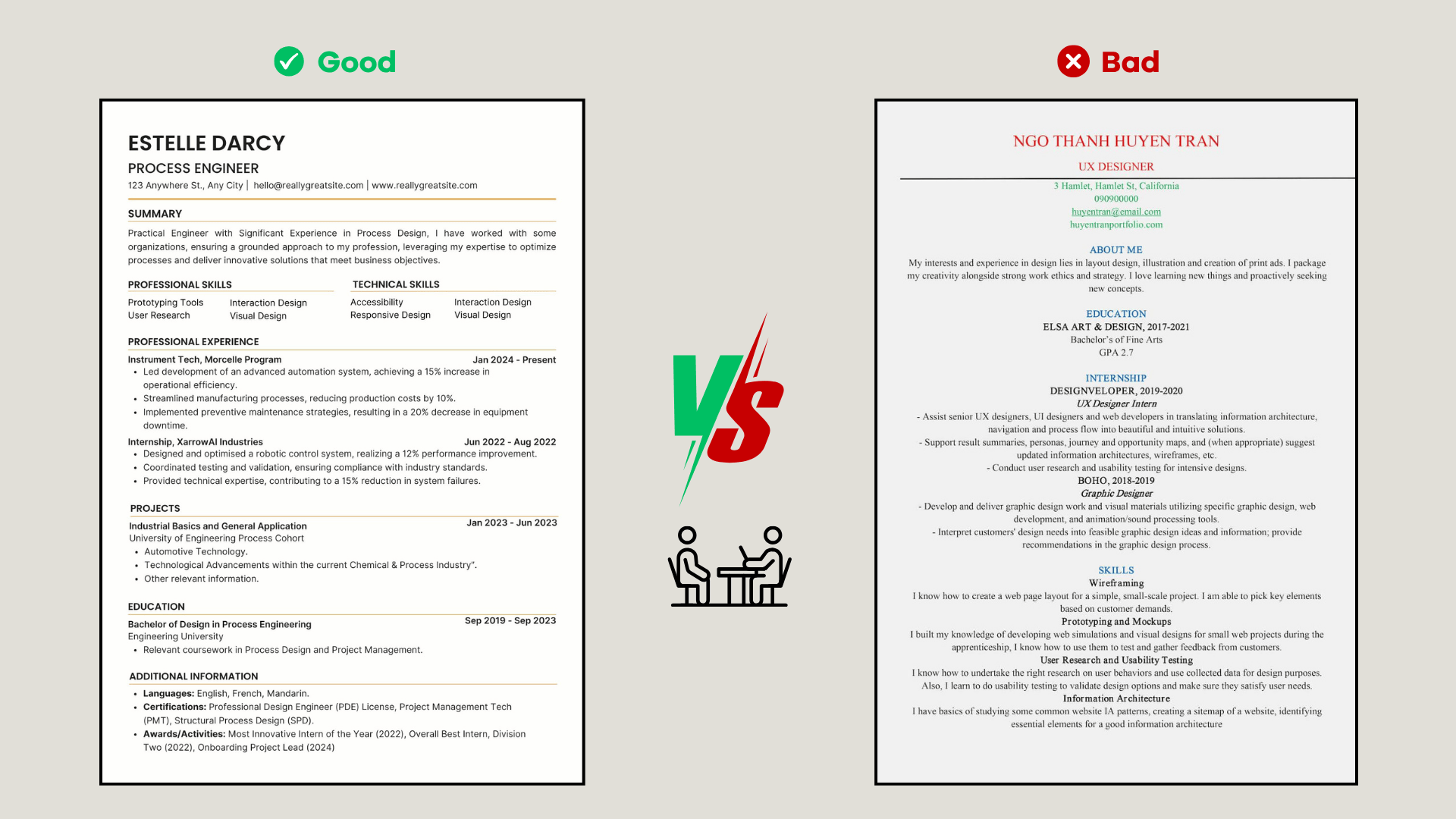A resume is a tool. It should show your experience and make it easy to hire you. Small choices matter. Below are plain, practical differences between good resumes and bad ones.
⚡ Quick Summary
- ✅ Good resume: Clear, focused, and easy to scan.
- ❌ Bad resume: Cluttered, vague, and hard to read.
🗂️ Format & Layout
Good ✅
- One or two pages max
- Clear headings (Work, Education, Skills)
- Consistent fonts and spacing
- Plenty of white space
- Bullet points for tasks and results
Bad ❌
- Long paragraphs
- Tiny fonts and cramped layout
- Inconsistent dates or styles
- Overuse of graphics or fancy templates that hide text
🧩 Content: What to Include
Good ✅
- Job title and company for each role
- Dates (month/year)
- Short bullets showing what you did and the result
- Skills that match the job
- Contact info: phone, email, LinkedIn
Bad ❌
- Vague lines like “responsible for tasks”
- Irrelevant hobbies or personal details
- Missing dates or unclear job titles
- Long job history with no highlights
💬 Language & Tone
Good ✅
- Short direct sentences
- Action verbs: managed, built, improved
- Numbers when possible: “Managed 6 people,” “Raised sales 18%”
- Simple, honest claims
Bad ❌
- Wordy fluff and cliches
- Passive voice that hides responsibility
- Exaggerated claims with no proof
- Odd capitalization or inconsistent tense
🎯 Customizing to the Job
Good ✅
- Matches keywords from the job ad
- Prioritizes the most relevant experience
- Adjusts bullets to show fit for the role
Bad ❌
- One generic resume for every job
- Irrelevant skills listed first
- Fails to show why you’re a fit
🏆 Achievements vs Tasks
Good ✅
- Focus on achievements
- Shows outcome: saved time, increased revenue, improved process
- Uses metrics when possible
Bad ❌
- Lists daily tasks only
- No evidence of impact
- Hard to see why the candidate mattered
⚙️ Skills Section
Good ✅
- Lists skills you can prove
- Includes tools and languages with proficiency (if relevant)
- Prioritizes job-relevant skills
Bad ❌
- Long skill lists with no depth
- Includes buzzwords like “hardworking” or “team player” without proof
- Outdated or irrelevant tools listed
🎓 Education & Dates
Good ✅
- Degree, institution, graduation year (if recent)
- Relevant certifications listed
- Extra training that matters to the role
Bad ❌
- Old coursework that adds no value
- Missing certification dates
- Overloaded with unrelated classes
🚫 Common Mistakes to Avoid
- Typos and grammar errors
- Inconsistent tense (mixing past and present)
- Using an unprofessional email
- Including salary history or reasons for leaving
- Submitting as an image or weird file type
🧠 Final Checklist (Before You Send)
- ☑️ Is it easy to scan in 30 seconds?
- ☑️ Does the top of the page show the best, most relevant info?
- ☑️ Are there 3–6 bullets per role with clear results?
- ☑️ Did you use numbers to show impact?
- ☑️ Is the resume tailored for the job you want?
- ☑️ Any typos or odd formatting?
💡 Bottom Line
A good resume is simple and honest. It shows what you did and what it achieved. It makes the recruiter’s job easy. Do that, and you stand out.












